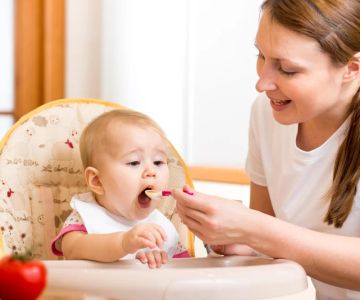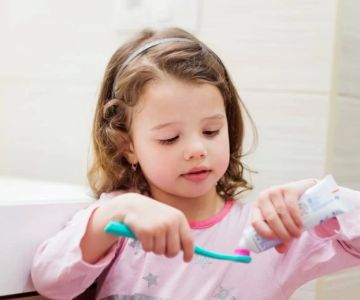Understanding How Children Develop Oral Language
Language development is a remarkable and intricate process that begins in infancy and continues to evolve as children grow. Oral language, the ability to speak and understand spoken words, is fundamental to communication and learning. From their first coos to their ability to have conversations, children go through several stages of oral language development. Understanding how children develop oral language not only sheds light on the cognitive and social milestones of childhood but also helps parents and caregivers support healthy language development. In this article, we’ll explore the process of how children develop oral language, key milestones, and practical tips for fostering this essential skill.
The Basics of Oral Language Development
Oral language development refers to how children learn to produce and comprehend spoken language. This process begins long before children start speaking in full sentences. It starts with listening to sounds, recognizing familiar voices, and making sense of the world around them. Oral language development is critical because it lays the foundation for future literacy skills, cognitive growth, and social interactions. While every child develops language skills at their own pace, there are general milestones that most children follow. Understanding these milestones helps parents track progress and identify any delays in development that may need attention.
The Early Stages: Birth to 6 Months
Language development begins even before birth, with babies already able to hear sounds in the womb. After birth, infants quickly start to respond to the sounds around them, particularly their caregiver’s voice. During the first few months of life, babies focus on listening to speech and distinguishing between different sounds. Around 2 to 3 months, babies start cooing, which involves making vowel-like sounds such as “oo” and “ah.” This is an early form of communication, and babies begin to use these sounds to express pleasure and attention. At this stage, they are absorbing the rhythm, melody, and intonation of speech, all of which are important for later language development.
6 Months to 12 Months: Babbling and Gesturing
Between 6 and 12 months, infants begin to develop more complex sounds known as babbling. They begin to string together consonants and vowels, like “ba-ba” or “da-da.” Babbling helps babies practice the coordination of their vocal cords, mouth, and tongue, which will be needed for speech later on. During this period, babies also begin to use gestures to communicate, such as waving, pointing, or reaching for objects. These non-verbal cues are a precursor to more sophisticated communication skills. Around 9 months, babies will start to understand simple words like their name or “no,” even though they may not speak them yet.
12 to 18 Months: First Words
At around one year, children typically say their first words. These words may be simple, like “mama,” “dada,” or “ball,” but they represent an exciting milestone in language development. At this stage, children’s vocabulary will consist mainly of nouns (names of people, objects, or places) and a few verbs. They will also begin to imitate the speech they hear, repeating words they have learned. Although they may not yet form complete sentences, they begin to use words purposefully to communicate their needs, desires, and emotions. Parents can support language development at this stage by encouraging their child to repeat words and by labeling objects in their environment.
18 to 24 Months: Vocabulary Explosion
Between 18 and 24 months, toddlers experience a vocabulary explosion. They begin learning new words at a rapid pace, often adding several words to their vocabulary each day. By the time they are 2 years old, children may know between 200 to 1,000 words, and they start using two-word combinations, such as “big truck” or “more juice.” This is the stage where children begin to experiment with word combinations and simple sentences. While their speech may still be difficult to understand, this period marks a significant shift from single words to more complex expressions. Encouraging toddlers to engage in conversations, read aloud, and name objects can help support their growing vocabulary.
3 to 5 Years: Complex Sentences and Conversations
As children approach 3 years of age, their language skills continue to evolve. They begin using more complex sentences that include subject-verb-object structure (e.g., “I want a cookie”). By age 4, children typically use more descriptive language, asking questions like “Why?” and “How?” and using adjectives to describe things (e.g., “big dog” or “fast car”). During this stage, children also start to grasp the rules of grammar, although they may still make mistakes, such as saying “goed” instead of “went.” They engage in longer conversations, understanding the back-and-forth nature of dialogue. The ability to share stories, explain experiences, and talk about their day becomes more common. This is also a time when children begin to understand abstract concepts such as time and emotions.
5 to 7 Years: Refining Language Skills
From age 5 to 7, children continue to refine their language skills. They begin to use more complex grammatical structures and longer sentences. They are also more adept at understanding figurative language, such as idioms and metaphors. At this stage, children are able to engage in detailed conversations, follow multi-step directions, and use language to express their thoughts and ideas more clearly. They may also begin to use language for academic purposes, such as in storytelling or explaining how something works. By the time they reach 7 years old, most children are capable of fluent speech, with a vocabulary that includes thousands of words.
Factors That Influence Oral Language Development
Several factors can influence how a child develops oral language. While every child develops at their own pace, external factors such as the quality of the language environment, social interactions, and genetics play important roles. Here are a few key influences:
1. Exposure to Language
One of the most significant factors in language development is exposure to language. Children who are regularly spoken to, read to, and engaged in conversations tend to develop language skills more quickly and efficiently. Interaction with adults and peers provides the necessary stimulation to expand vocabulary and comprehension skills. Studies have shown that children who are exposed to rich language experiences in their early years are more likely to develop strong oral language skills as they grow.
2. Social Interactions
Social interactions are crucial for language development. The more opportunities children have to interact with others, the more likely they are to develop effective communication skills. Play with peers and conversations with family members help children learn how to take turns in a conversation, understand social cues, and practice using language to express themselves. Group activities such as storytelling, playing pretend games, and cooperative tasks can also enhance language development.
3. Hearing and Speech Disorders
In some cases, children may experience delays or difficulties in oral language development due to hearing or speech disorders. Hearing loss can affect a child’s ability to process and produce sounds, making it difficult for them to develop language skills. Speech disorders such as stuttering, articulation problems, or difficulty with pronunciation can also interfere with oral language development. Early identification and intervention are crucial for addressing these issues and supporting children’s language growth.
4. Cultural and Environmental Factors
The cultural and environmental context in which a child grows up also plays a significant role in language development. Children from families where more than one language is spoken may experience bilingual or multilingual language development, which can influence their acquisition of both languages. Additionally, the socioeconomic status of a family can affect the amount and quality of language exposure a child receives, as well as access to educational resources and support services.
Supporting Oral Language Development in Children
Parents and caregivers play a vital role in supporting the development of oral language skills. Here are some practical ways to foster language development in children:
1. Talk to Your Child Regularly
Engage in conversations with your child every day. Even if they can’t speak in full sentences yet, respond to their babbling, cooing, or early words. This interaction helps build their confidence in communication and reinforces the connection between words and their meanings.
2. Read Together
Reading aloud to your child is one of the best ways to promote language development. Choose books with colorful pictures and simple text, and encourage your child to point to objects or name things in the story. As children grow, start reading books with more complex sentences to expand their vocabulary and comprehension.
3. Encourage Play and Storytelling
Creative play and storytelling are powerful ways for children to practice language. Encourage your child to pretend, play make-believe, and tell stories about their day. These activities help children practice sentence formation, storytelling, and the use of descriptive language.
Language development is a complex process that requires patience, interaction, and time. By understanding how children develop oral language and knowing the key milestones, parents and caregivers can actively support children in reaching their full language potential. For more resources on language development and child care, visit Dentistry Toothtruth for helpful tips and services tailored to early childhood education and development.






 Dr. Dental: Dentistry & Braces4.0 (482 review)
Dr. Dental: Dentistry & Braces4.0 (482 review) A Farhadian Dental Group, Inc.4.0 (17 review)
A Farhadian Dental Group, Inc.4.0 (17 review) Adelberg Montalvan Pediatric Dental - Massapequa Park4.0 (416 review)
Adelberg Montalvan Pediatric Dental - Massapequa Park4.0 (416 review) Rittenhouse Dental Group4.0 (91 review)
Rittenhouse Dental Group4.0 (91 review) Premier Dental4.0 (33 review)
Premier Dental4.0 (33 review) Jain Shilpi DDS5.0 (1 review)
Jain Shilpi DDS5.0 (1 review) The Importance of Oral Health Education During Pregnancy for a Healthy Pregnancy
The Importance of Oral Health Education During Pregnancy for a Healthy Pregnancy Best Tips for Brushing Your Teeth Properly for Healthy Gums: Essential Techniques for Oral Health
Best Tips for Brushing Your Teeth Properly for Healthy Gums: Essential Techniques for Oral Health Why Skipping Dental Checkups Can Lead to Bigger Oral Health Problems
Why Skipping Dental Checkups Can Lead to Bigger Oral Health Problems Advantages of Porcelain Dental Restorations
Advantages of Porcelain Dental Restorations How Can Diabetes Cause Tooth and Gum Problems? Preventing and Managing Oral Health Issues
How Can Diabetes Cause Tooth and Gum Problems? Preventing and Managing Oral Health Issues Healthy Habits for Promoting Good Oral Health and Hygiene: Tips for a Healthy Smile
Healthy Habits for Promoting Good Oral Health and Hygiene: Tips for a Healthy Smile